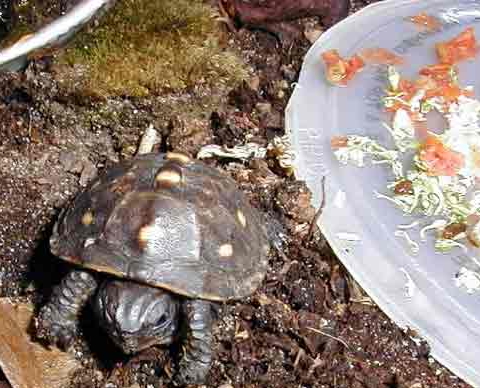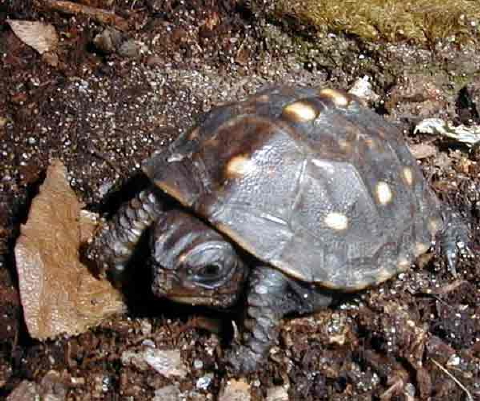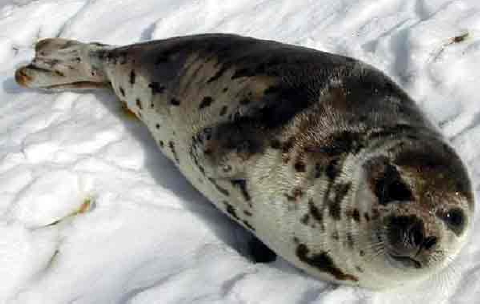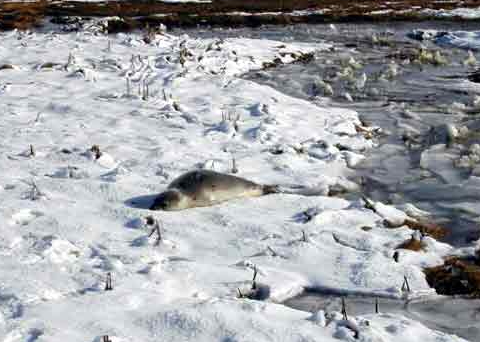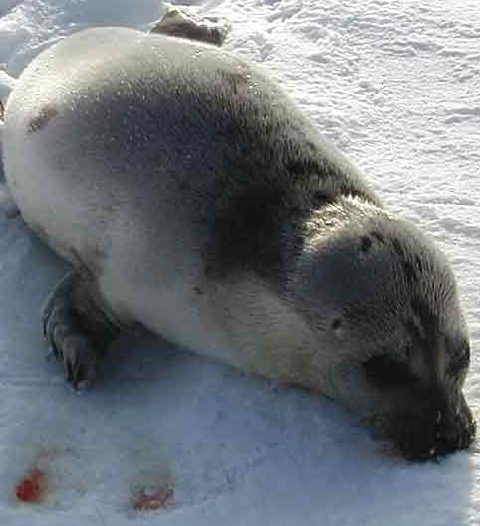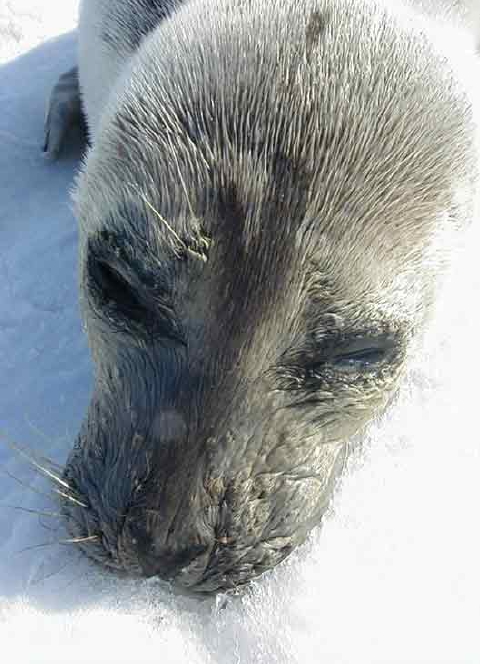“Flower” –Â Eastern Box Turtle Hatchling
Tiny Flower, the box turtle hatchling found cold-stunned and dropped on my doorstep on 14 November, has become quite active this last week. In her makeshift terrarium with a beautiful southern exposure to the Fresh Brook marsh from my garage lab, she had settled into a slow but sure rhythm through December and January. She would hunker down beneath her pile of oak leaves for a couple of days, then lumber over to her wading pool (a converted sushi bowl) where she’d lounge for a few hours, stopping and grazing at her food pile en route to the pool and back to her hiding place.
Eastern Box Turtle Hatchling
For the last week or so, she’s begun daily power walks, active on and off from dawn to dusk. She spends a lot more time in her two pools and almost no time hiding under the leaves. If she’s reacting to the new sun angle in anticipation of spring, she seems a bit premature. But on the other hand, when you live in a temperature-controlled, humidity-controlled habitat with a nice heat lamp to keep life warm and toasty, spring may simply be a state of mind.
